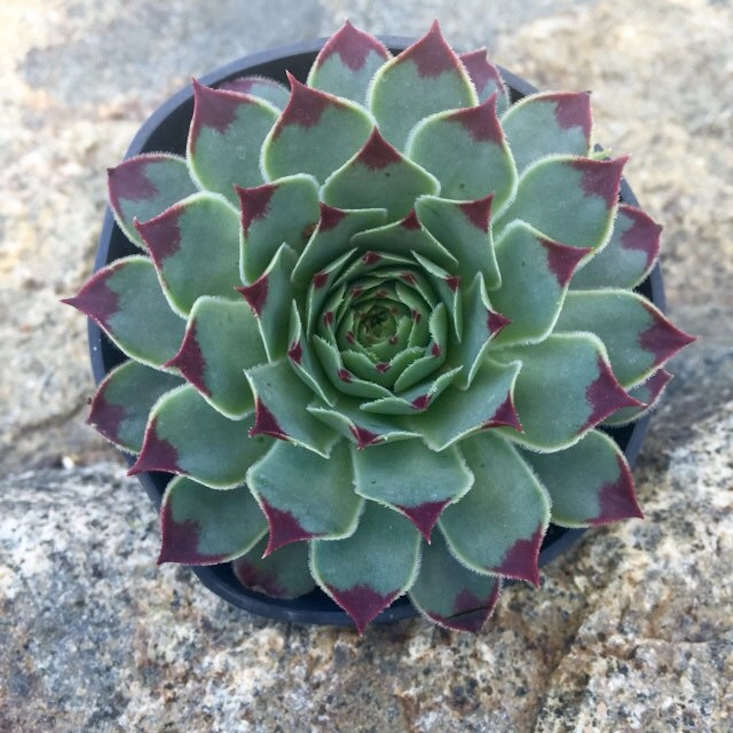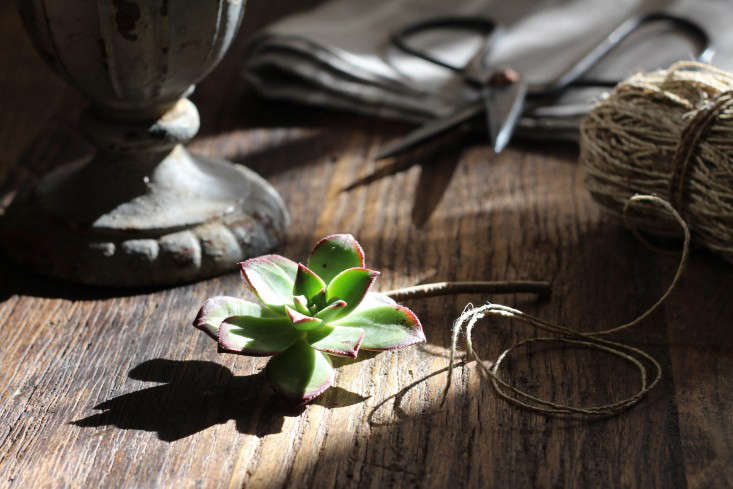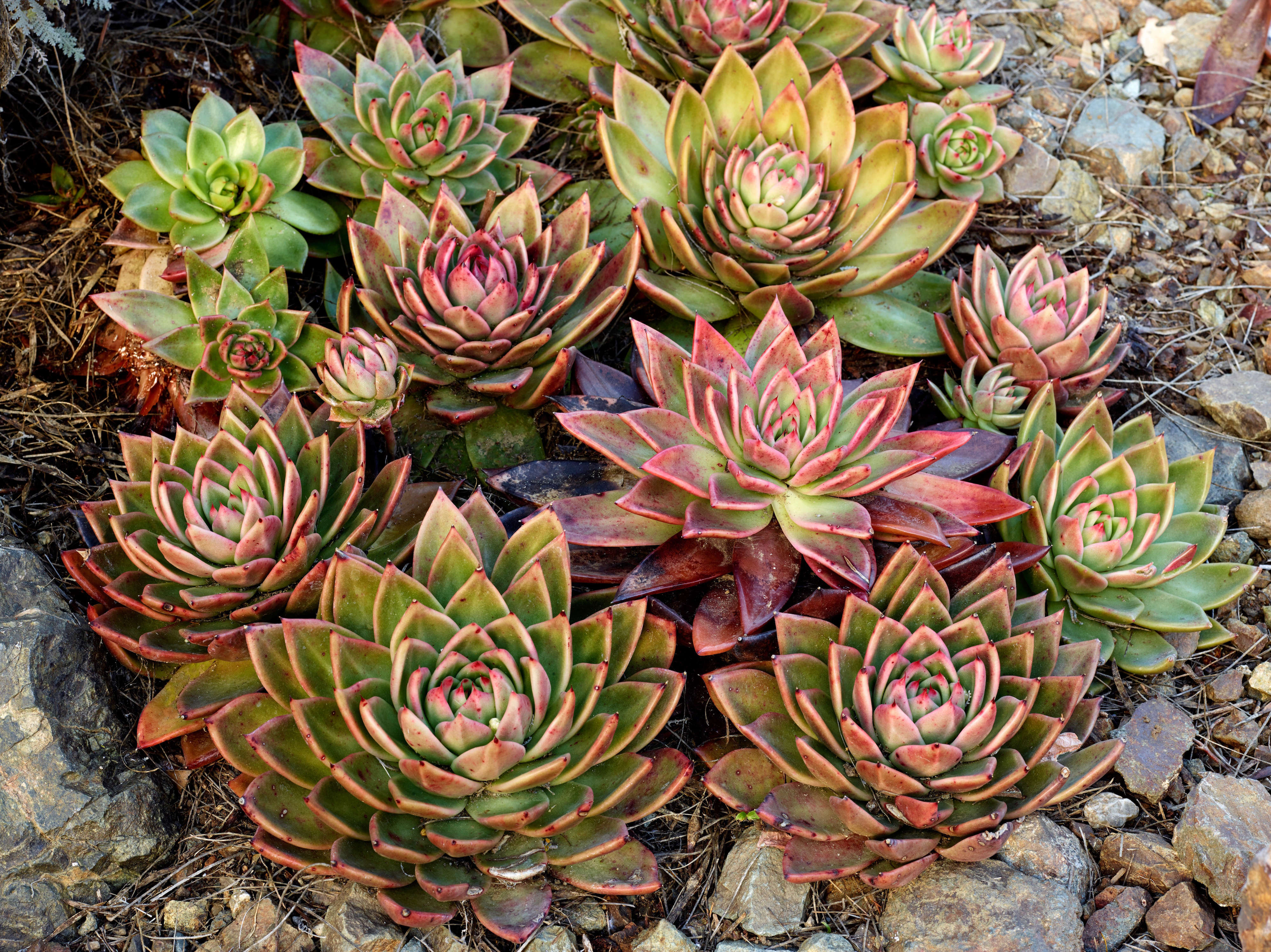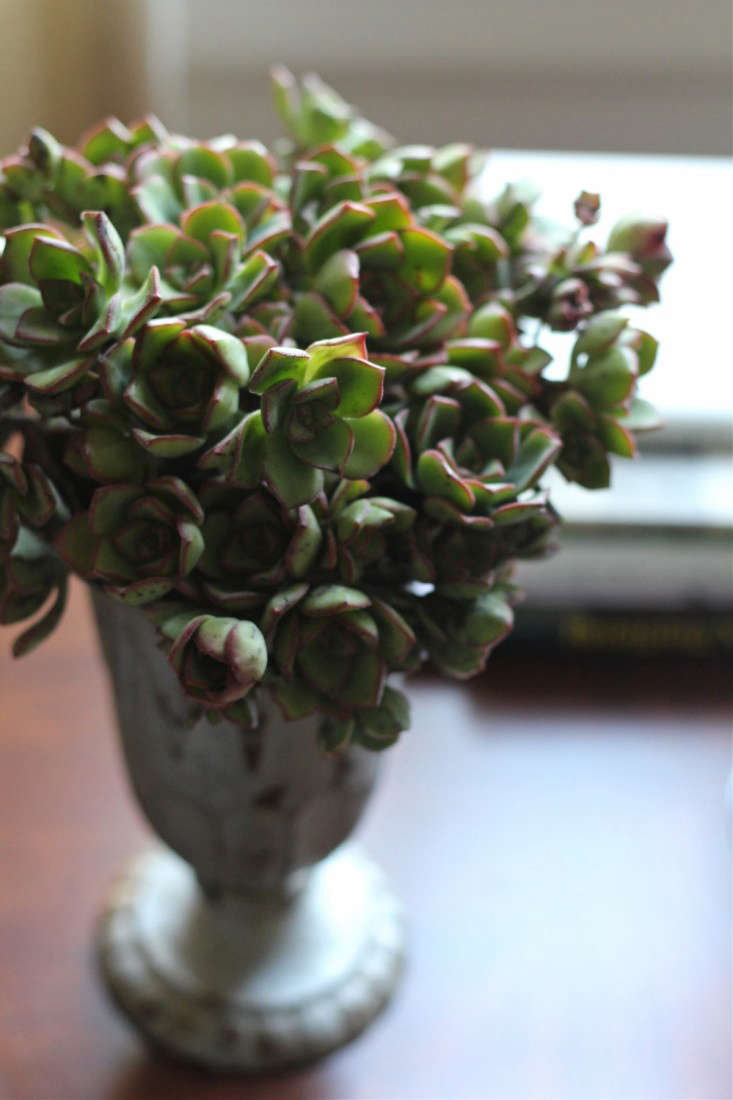Echeveria, Echeveria elegans: “Mexican Hens and Chicks”
It is fitting that one of the most brilliantly colored and strikingly beautiful kinds of succulents, those in the genus Echeveria, are named for an artist. Atanasio Echeverria y Godoy was an intrepid 18th-century botanical artist who spent 17 years recording thousands of specimens while on expeditions in his home country Mexico, as well as in northern Central America and California. Among the species documented on those trips was Echeveria, native to the hot, dry limestone hills of central Mexico.
Today these plants—with leaves that can be rounded, pointed, or even frilly and which produce brightly colored flowers atop gangly stalks—are wildly popular with gardeners who value ease of care as well as beauty. You can see why:
Above: Photograph by Michelle Slatalla.
There are nearly 200 species of Echeveria with more still being discovered by plant hunters. Hybridizers are busy creating even more (and more outrageous) varieties.
Above: Photograph by Matthew Williams for Gardenista.
One of the more common species, Echeveria elegans, is known as “Mexican Hens and Chicks” because it spreads through adorable, mini offsets which form around a mature plant known as a “hen.” The new plants (the “chicks”), stay attached to the mother until they are able to sustain themselves or are removed and transplanted by a gardener.
Above: A Sempervivum Calcareum in a 4-inch pot is $6.95 from Succulent Charm via Etsy.
Confusingly, Sempervivum, a genus related to Echeveria because they both belong to the Crassulaceae family, is also known as “Hens and Chicks.” Both plants are primarily evergreen succulents that form tight cabbage-like rosettes, but Sempervivum is native to the Mediterranean islands and southern Europe and has more tolerance for chilly weather. The close observer may also notice that the leaves of many Echeverias tend to be pudgier and more pillowy than the generally thinner leaves of Sempervivum.
Above: Echeveria ‘Hummel #2’ and a dyckia in Ruth Bancroft’s garden in Walnut Creek, California. For more, see Required Reading: Ruth Bancroft’s Bold Dry Garden. Photograph by Marion Brenner courtesy of Timber Press.
Cheat Sheet
- Echeverias are so varied in color, size, and shape that there is no need to go outside the genus to assemble a striking garden; just combine a few contrasting varieties.
- Small species form thick mats and can be used effectively as ground covers where they are hardy, or as annuals in carpet-bedding designs.
- Echeverias look gorgeous in containers and can be paired with many different kinds of plants to provide striking arrangements. Good companions, which have similar cultivation needs, include Sedums, lavender, and ground covers such as Irish moss (Sagina subulata).
Above: If Echeverias get leggy, cut them off at the base; the stems will make a bouquet that can last a month or more without water. Photograph by Michelle Slatalla.
Keep It Alive
- Echeverias are hardy in zones 9 to 11 and favor dry, sunny conditions.
- While they like bright light, echeverias should not be planted where they will be subject to unrelenting hot summer sun, which can burn and permanently scar their leaves.
- Water the plants thoroughly and allow them to completely dry out before you water again. As with all succulents, use free-draining soil and never, never allow your plants to sit in soggy dirt.
Above: Echeveria hybrid (E. agavoides x E. colorata) is cold-tolerant.For more, see Required Reading: Ruth Bancroft’s Bold Dry Garden. Photograph by Marion Brenner courtesy of Timber Press.
Given the proper conditions, Echeverias are generally quite easy to grow and problem free. Some experts advise using tempered or warm water to prevent root rot when irrigating Echeverias. Water these plants from below and avoid allowing water to sit in the rosette as that can cause rot or fungal disease.
Above: Photograph by Michelle Slatalla.
If Echeverias are grown indoors or in other high humidity conditions, they sometimes attract mealybugs. Removing dead leaves from the plant as it grows deprives pests of a haven and dabbing insects with full-strength rubbing alcohol on a Q-tip is a way to kill them without damaging the plant’s leaves. Insecticidal soap is effective but can damage the distinctive, protective waxy outer coating of the leaves.
N.B.: For more ways to use echeveria outdoors or in, see:
Finally, get more ideas on how to successfully plant, grow, and care for echeveria with our Echeveria: A Field Guide.
Finally, get more ideas on how to plant, grow, and care for various houseplants with our Houseplants: A Field Guide.
Interested in other succulents or cacti? Get more ideas on how to plant, grow, and care for various succulents and cacti with our Succulents & Cacti: A Field Guide.
















Have a Question or Comment About This Post?
Join the conversation